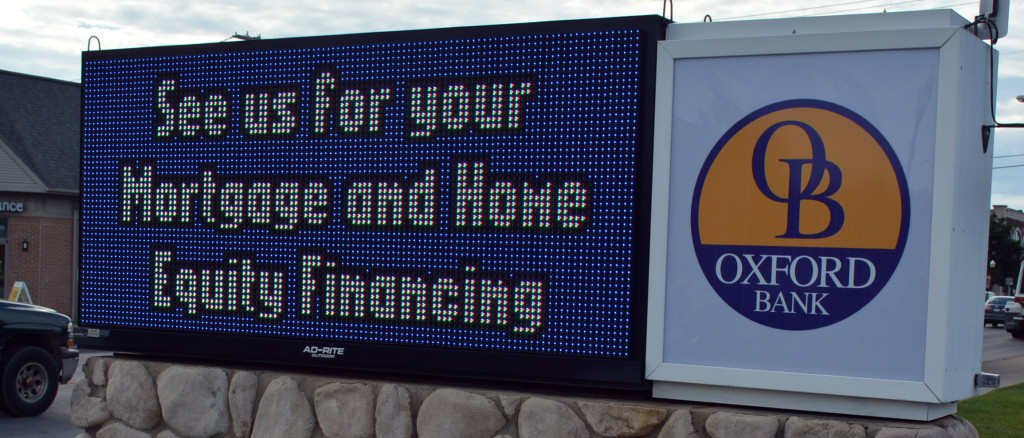
It appears electronic signs won’t be making a comeback in Oxford Village anytime soon, so don’t expect to see an increase in flashing lights and messages beckoning to passersby.
Last week, planning commissioners voted 6-0 to recommend “no changes” to the sign ordinance adopted by council on April 12.
The new ordinance, which took effect May 20, expressly prohibits electronic signs.
Prior to that, these signs had been prohibited since 2009, but the planning commission was allowed to approve them through the special use process. It approved four of them between 2013 and 2015. Commissioners attached specific conditions to three of the signs.
When council approved the new ordinance earlier this year, it eliminated language setting objective standards for electronic signs and the special use provision. It also referred the subject back to the planning commission with a request that the body provide a recommendation as to whether or not it wished to further address the issue.
Based on last week’s discussion, there were no fans of this type of signage among commissioners.
“I won’t make any secret of it – I’m very much opposed to (electronic signs) myself,” said Commission Chairman John DuVal, who firmly believes they’re “not appropriate” given the village’s historic character and mission.
“I’m opposed as well,” said Commissioner Bonnie Staley. “They’re just not suitable for us, in my opinion.”
Commissioner Maureen Helmuth, who also serves on the village council, explained that when she looked at a map of where electronic signs could potentially be allowed, “every property,” with the exception of the industrial-zoned area, “is almost directly across from a residential section.”
“I would hate to live across from one,” she said. “I would hate to see that out(side) my window all the time . . . I don’t want them.”
Commissioner Adam Johnson agreed with Helmuth.
“That’s my biggest concern,” he said. “I would hate to live next to them.”
The harshest criticism of electronic signs came from Commissioner Gary Douglas, who’s new to the board.
“I’ve lived in communities where unrestrained growth of signage has cheapened and destroyed the visual appeal and the aesthetic of a community,” he said. “Personally, I would hate to see that happen here.”
In addition to viewing them as “cheap and unattractive,” Douglas doesn’t believe electronic signs work.
Although he admitted to not having any data to back this up, Douglas said, “I don’t find them to be a very effective means of advertising.”
He also worries about their impact on traffic safety. “I think that they have a potential to be a distraction to the drivers who should be focused on what they’re doing (on the road),” Douglas said.
Prior to the ban, the village allowed both Oxford Bank and Genisys Credit Union to have electronic message signs on M-24. The municipality also permitted electronic signs for the Sunoco gas station at the corner of M-24 and Lincoln St. and for John Burt Realty on E. Burdick St., just east of M-24.
The ordinance change does not impact these existing signs as they are considered grandfathered.
“The cat’s out of the bag” already, Douglas said, so he’s worried continuing to allow electronic signs could lead to a “profusion” of them in the future.
“I would be all in favor of shutting this down and not allowing any more,” he said.
Although he ended up voting in favor of the motion to recommend no changes to the sign ordinance, Commissioner Gary Deeg indicated he felt handling electronic sign requests “on a case-by-case basis” was the “appropriate way” to deal with them.

Leave a Reply